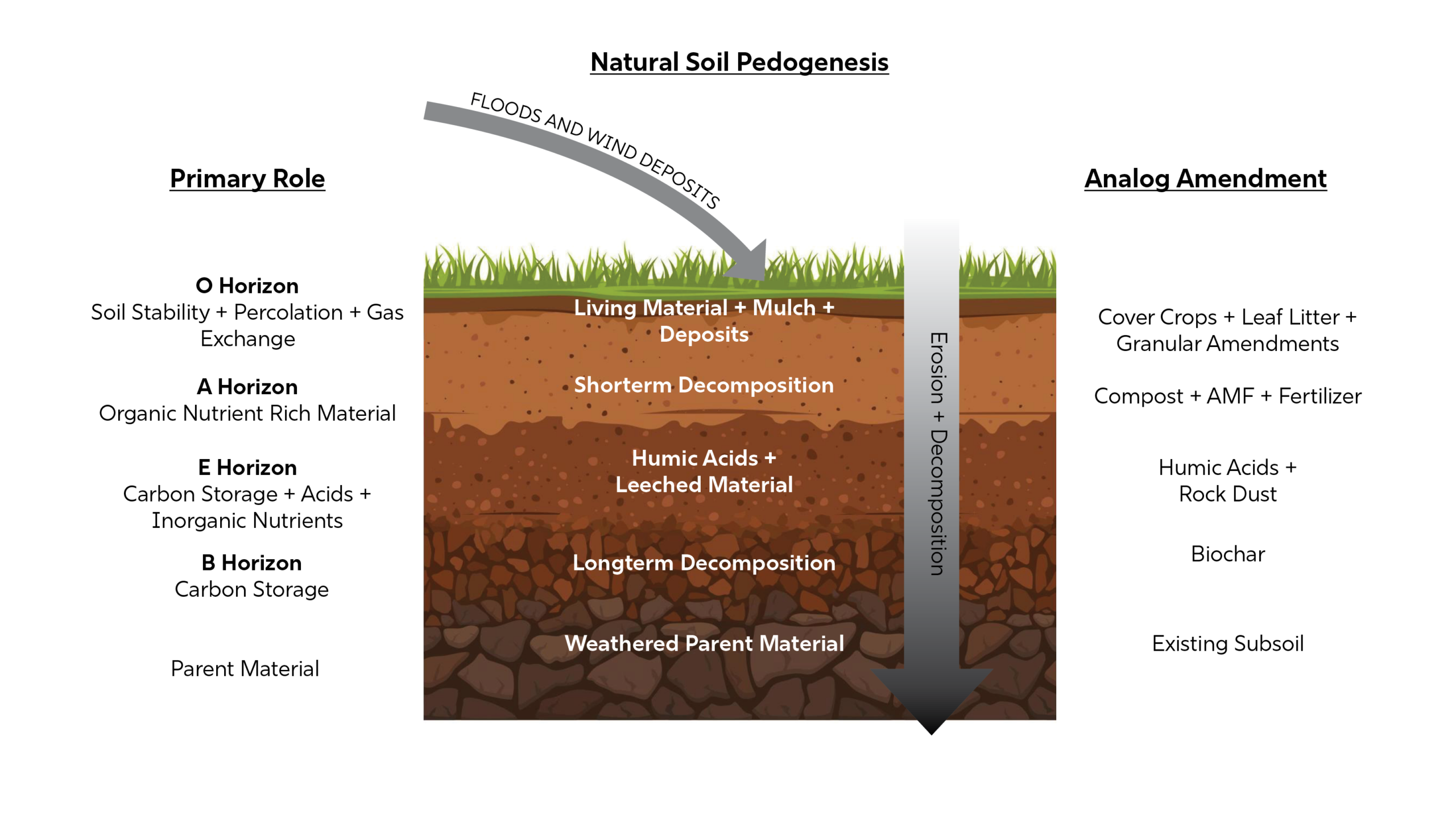Home / Site Design + Construction / Specifying Amended + Blended Soils
Highlights
Why Do This Step?
Soil composition, amendments, and placement specifications for soils impact the long-term health, soil organic carbon sequestration, and total carbon storage capacity of each site. Tailoring specified soils and amendments to the existing site conditions, target ecosystem community, and anticipated site management methods are key elements in ensuring consistent practices that prioritize soil health and reduce environmental degradation.
Creating Living Soil
Soils should be specified or designed to create appropriate physical and/or chemical conditions for the project site and its functional requirements. There are well-documented standards and guidelines for achieving desired soil functions that enable development and production, such as water infiltration, stability, or plant productivity. These typical standards, however, may not adequately account for the importance of maintaining or enhancing biological activity in soils for improved carbon sequestration, nutrient capture, aggregate stability, and microbial diversity. These characteristics of soils, often abbreviated as “Living Soils,” are the source of the increased carbon, available water-holding capacity, nutrient availability, and enhanced plant productivity associated with many regenerative agriculture and organic horticultural techniques.
Soil Specifications
A complete site assessment must be conducted prior to specifying soils (See Site Analysis + Planning: Soil Smart Designs). Evaluating and understanding the unique soil hydrology, vegetation, biodiversity, slopes, and erosion risks are paramount to creating a Soil Protection and Management Plan and determining which soils should be amended or specified to maximize the five healthy soil functions (see Soil Primer + Assessment Toolkit).
For soils that are amended, relocated, or replaced during the construction process, a clear set of requirements must be developed. Every soil management area will have its own unique set of specifications for fertility, texture, and other key characteristics. The site design and the information gathered during the site assessment must work together to balance the goals of the design and the overall health of the soils on site. Specifications that address all five soil functions will lead to successful healthy soils development, higher transplant success, and higher levels of carbon sequestration over time. A thoughtful soil protection and management plan can also lower the resource and carbon costs associated with soil movement, reducing the overall carbon footprint of the project.
It is highly encouraged to work with experienced professionals to develop the necessary specifications. Citing from the ASLA Landscape Architectural Technical information Series, (Kays, 2013, p. 59) soil specifications should indicate:
Soil Physical Requirements
Texture—should be specified in one of the following ways:
- Soil Texture Classification Indication
- Percentage Range of Sand, Silt, and Clay
- OR Specifying a percentage range by weight of all the components, including gradients of sand
- Fragment Size Requirements
- Aggregates: zero percent greater than (insert)^3 mm (1/8 inch) in diameter
- Sticks, Debris, and Foreign Material: less than 1 percent by weight
- Soil should be screened, and only the material that passes through a screen with ½ inch (12 mm) openings to be accepted
- Saturated Hydraulic Conductivity > (insert) inches/hour
- Moisture Holding Capacity
- Water Holding Capacity at atmospheric pressure (0 bars soil moisture tension): > (insert) by volume
- Water Holding Capacity at -1/10 bar soil moisture tension: > (insert) by volume.
- Water Holding Capacity at –1/3 bar soil moisture tension: > (insert) % by volume
- Water Holding Capacity at –15 bar soil moisture tension: > (insert) by volume
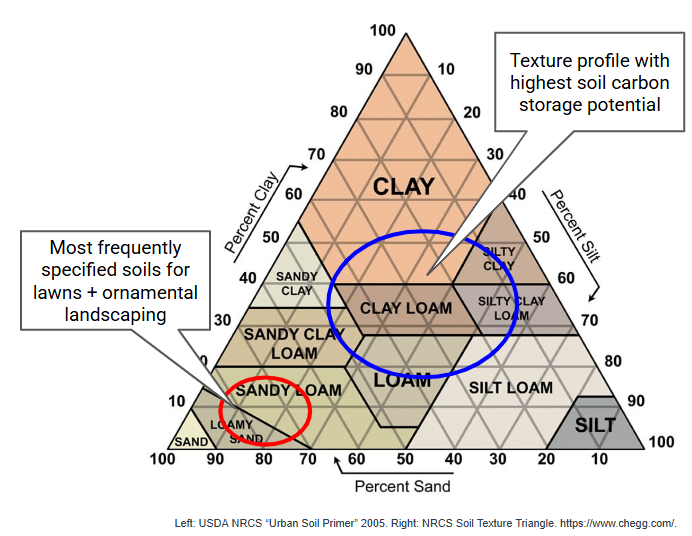
Soil Chemical Requirements
- Cation Exchange Capacity: < (insert) meq/100 grams of fine earth
- Soluble Salt Content: < (insert) mmho./cm at 25oC
- Soil Reaction: (insert) to (insert) pH
- RCRA Metals: Shall be below maximum limits established by EPA v. Phytotoxicity: Below phytotoxicity limits established by SSSA
Soil Installation Procedure Requirements
- Submittal requirements for soil and soil amendment product data and certifications
- Supplier qualifications and local sourcing requirements
- Transportation and stockpiling requirements
- Placement requirements, such as subsoil preparation, discing and/or transition layer blending requirements, compaction limitations, and finish grading/mulch application.
What About Soil Carbon?
While standard soil specifications typically emphasize performance characteristics like good drainage or structural stability, they usually ignore the role and dynamics of Soil Organic Carbon (SOC) in achieving and maintaining high-functioning soils. The Healthy Soils Action Plan (HSAP) identifies SOC as the keystone for long-term soil health. When soil specifications are optimized for other performance characteristics, their implementation has unknown impacts on long-term soil health in every application. These specifications need to be updated to include the current understanding of SOC.
The potential for, and rate of, soil carbon sequestration is impacted by both existing soil characteristics and land cover. These are both highly regionally specific variables. Recommended standards and actions should be able to be modified to address various soil types and land cover types, for example, by drawing from Soil Organic Carbon resources and Life Cycle Analysis modeling tools.
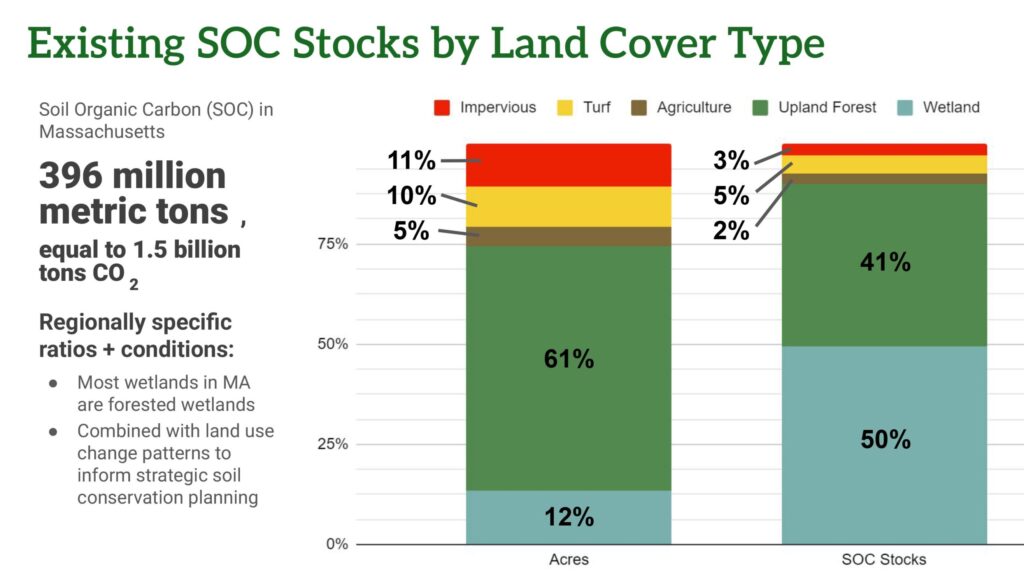
Soil Amendments
The best soil amendments will serve the site’s functional needs while simultaneously optimizing soil health. In particular, soils that will be planted will likely need to be amended to meet or exceed the productive capacity of the soils prior to construction. Careful consideration of the impact of each type of amendment on soil properties and characteristics should be given when specifying amendments (see Amendment Selection, below).
Wherever possible, existing soils should be retained and amended rather than replaced. Not all soils can be amended to meet the necessary functional requirements, and some may need to be replaced by an engineered soil mix.
The four healthy soil management strategies can be applied to amending: identify and protect healthy soils that don’t need amending in place, then rehabilitate existing soils in place, then relocate and retain soil to amend it on-site and before reinstalling. When these are not possible, replace the soil with a specified soil blend.
Key Takeaways:
- If amending, work with an ecologist and/or soil scientist to determine appropriate amendments to improve overall soil health without compromising design requirements.
- If replacing, work with a soil scientist, engineer, and/or industry professional to specify soil that meets design requirements without compromising healthy soil functions.
Design Considerations + Interventions
Meeting site-specific needs while also maximizing healthy soil functions may require interventions at different levels in the soil profile. Whenever possible, limiting work to the uppermost soil horizon will cause the least amount of disturbance and compaction. This “top-down” approach mimics natural soil formation processes and is recommended in most applications. In cases where excavation is unavoidable, soils may need to be rebuilt from the “bottom-up” using materials that match the surrounding soil profile alongside amendments that enhance healthy soil functions.
Short-Term Interventions
Organic Layer + Top Soil
Interventions that replenish inorganic and organic nutrients back into the top of the soil profile quickly feed plants, fungi, and other organisms. These amendments are most suitable to encourage initial plant establishment, and in places where nutrients are often leaving the soil through crop harvesting, and/or leaching. However, relying on regular additions of amendments should be avoided, especially in places where excess nutrients may negatively impact the environment, such as green infrastructure projects.
Project Type | Improvements |
|
|
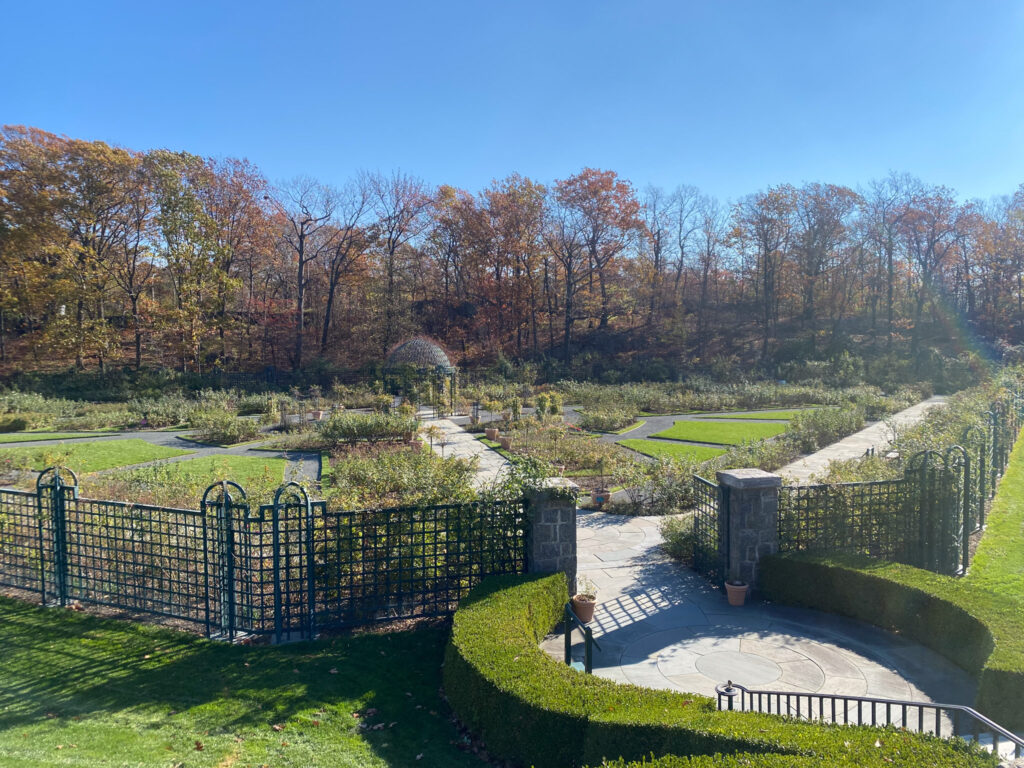
Medium-Term Interventions
Eluviation Soil
Medium-term improvements incorporate additional inorganic nutrients, carbon storage, and nutrient availability into the mid- and lower-level soil horizons. By supporting the capture and availability of nutrients for plant roots, they can strengthen the soil microbiome, building and improving the health of higher soil levels over time. Unlike the organic and topsoil horizon interventions, this may require excavation—and associated monetary and carbon costs—to amend. These amendments can particularly benefit places where high-nutrient non-point source runoff may be percolating into the soil, as these amendments may not offer nutrients themselves but can capture and make filtered nutrients bioavailable for plants. Medium-term interventions are also appropriate for sites where excavation is necessary and a target ecosystem is identified.
Project Type | Improvements |
|
|

Long-Term Interventions
Eluviation + Subsoil
Long-term interventions add soil capacity for carbon storage and nutrient availability. These functions, which are normally found deeper in the soil horizons, can be included in almost all different project types as they often act as a foundational piece of soil pedogenesis. As this occurs deeper in the soil profile, the level of interventions is more demanding and requires excavation and preservation of the soil profile. These amendments contribute to the long-term decomposition that supports the soil food web, where carbon is stored, water is held, and nutrients are captured and then made bioavailable to feed the soil from the bottom up. These will be most appropriate for places where significant long-term ecosystem growth is anticipated (forest regeneration, for example), highly degraded or previously disturbed sites, and where excavation is necessary for the project.
Project Type | Improvements |
|
|
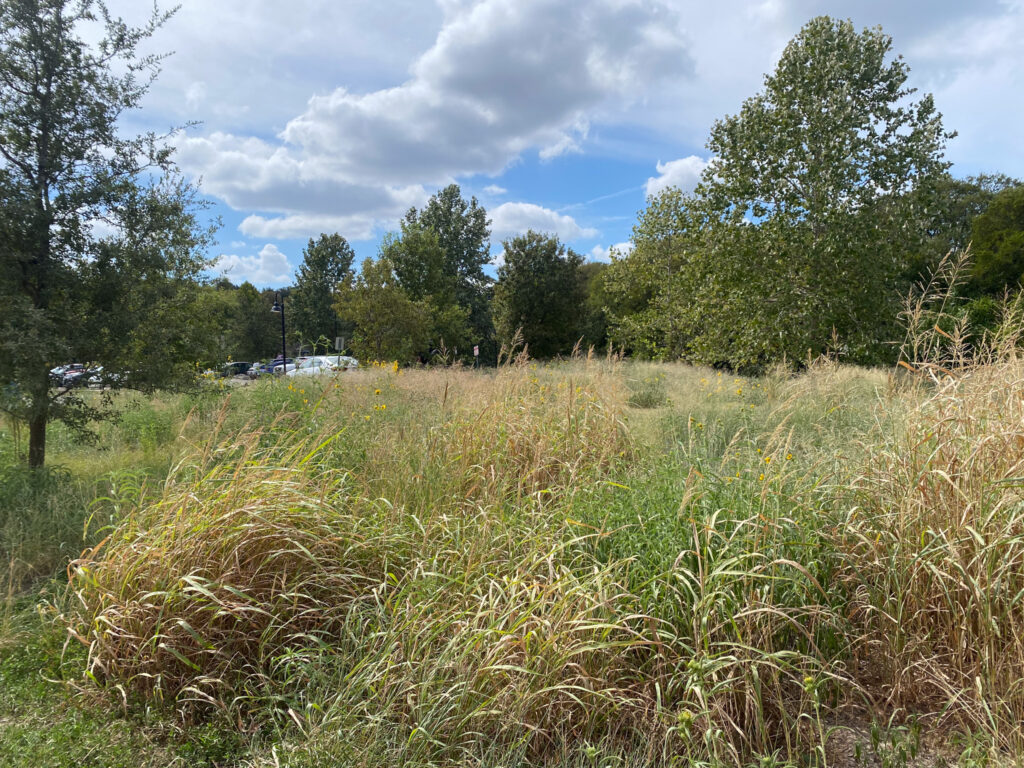
Amendment Selection
Highly Reliable Amendments
These are widely used and often locally available products that are consistently high in organic material. Source from reputable companies and ask for test results or samples before installation to ensure cleanliness.
Compost
The most common and widely used amendment to improve soil health is high-quality compost. If possible, compost should be produced by a recognized member company of the US Composting Council and exhibit the following specifications (Kays, 2013):
- Uniform quality, finely divided fine particulate or fine granular, composed of partially decomposed organic matter
- pH range of 5 to 7.5
- Free from toxins, ashes, construction debris, cement, bricks, concrete, boulders, tar residues, tarred paper, boards, chips, plastic, glass, or any other undesirable material
- Minimum of 25% humus content
- Electrical conductivity (salt content) shall be less than 5000 micro-mohs/cm
- Must pass through a screen with ½-inch openings
- Tested by an approved laboratory using Test Methods for the Examination of Composting and Compost (TMECC) with US EPA Seal of Testing Assurance
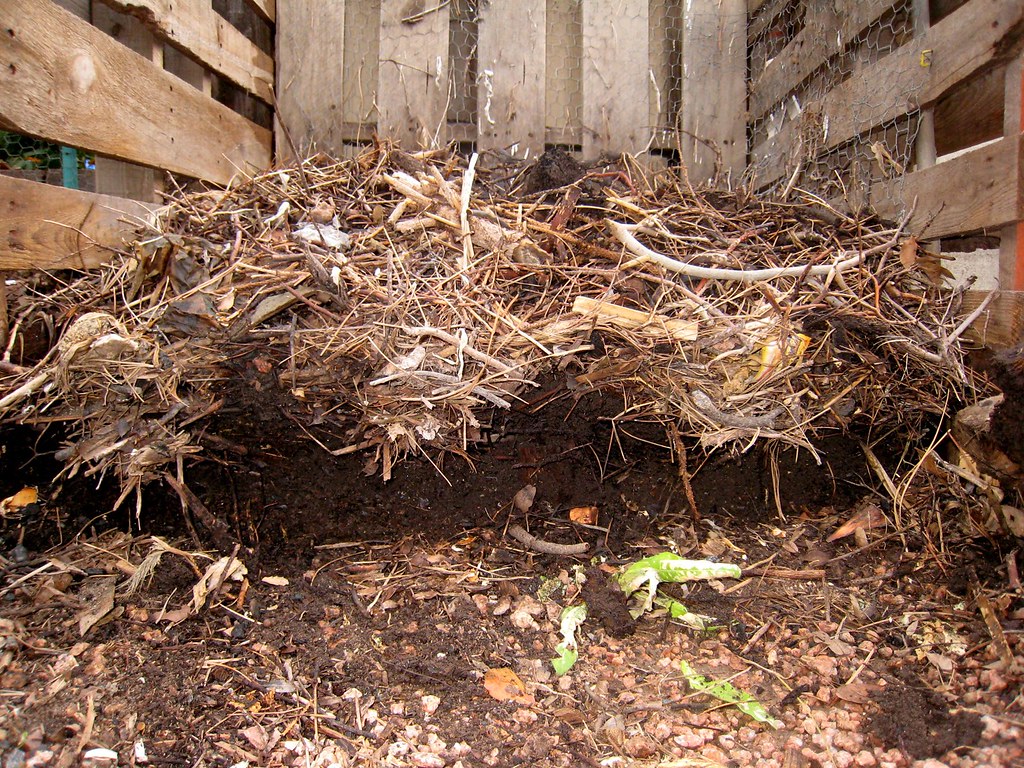
Wood Chips
Compared to other landscape mulch materials, wood chips are one of the best performers for weed suppression, moisture retention, temperature moderation, and tree and shrub productivity (Chalker-Scott, 2007b). The chemical and physical diversity present in the bark, wood, and leaves of wood chip mulch resists compaction and creates a diverse environment ideal for soil microbes. Wood chips are relatively slow decomposers and supply a steady flow of nutrients and absorbed water to the soil system. Both used as a surface mulch and incorporated into soils, they can increase soil organic matter (Espinosa et al., 2020). Wood chips have few, if any, drawbacks. If they are free from debris and installed properly, concerns about negative impacts on soil chemistry, transmission of pathogens, and introduction of fire hazards or pests have not borne out in field trials (Chalker-Scott, 2007a). As an added bonus, they are typically a low or no-cost soil amendment.
Application rates for wood chips vary; weed suppression is best at depths of 4–6 inches for ornamental sites and 8–12 inches for restoration sites. As in all mulch installations, they should not be mounded over the crowns and trunks of woody plants.
A common myth has arisen that wood chip mulch depletes soil fertility, causing many homeowners and municipalities to avoid its use. This myth is based on a well-documented decrease in nitrogen levels at the wood chip mulch/soil interface due to saprotrophic fungi starting to digest the wood. This depletion is short-term and limited to that interface. It does not extend into the soil rooting volume and contributes to weed suppression by decreasing nutrients available to surface seeds.
Cover Crops
Cover crops are temporary vegetative covers that are killed and incorporated or frost-killed in place for mulch. They are routinely used in agricultural settings to improve soils before transitioning to the intended vegetation, such as cash crops, meadows, or gardens. The purpose is to quickly cover bare soils to prevent erosion, suppress weedy species, and retain nutrients in place. Many species can be used, each offering unique seasonal benefits. Seeding rates vary by type, and organic, non-treated seed should be sourced.
In general, cover crops have low cost and a low embodied carbon footprint. Soil improvements are slow, but allow organic matter to build passively while supporting habitat above and below ground.
These same benefits extend to permanent planting plans in restoration and horticultural landscapes. Designers and gardeners should ideally plan to cover the full soil surface through groundcovers and perennial planting, treating any mulch or bare soil as a temporary condition during establishment.
Cover Crop Selection
Example Crops | Establishment Time | Attributes |
Oats | Early Spring or Early Autumn | Increase Organic Matter Reduce Weeds Stabilize Soil Aggregates Summer Erosion Protection Winter Erosion Protection |
Field Peas | Early Spring | Increase Organic Matter Nitrogen Fixation Reduce Weeds |
Forage radish | Summer | Break Up Deep Compaction Reduce Weeds |
Buckwheat | Early Summer-Summer | Increase Phosphorus Availability Reduce Weeds Stabilize Soil Aggregates |
Annual Ryegrass | Spring-Late Summer | Reduce Weeds Stabilize Soil Aggregates Summer Erosion Protection Winter Erosion Protection |
Red Clover | Late Summer-Winter | Attract Beneficial Insects Break Up Deep Compaction Nitrogen Fixation Reduce Weeds Winter Erosion Protection |
White Clover | Spring or Late Summer | Nitrogen Fixation Stabilize Soil Aggregates Winter Erosion Protection Erosion Protection Long Term |
Winter Rye | Spring or Fall | Increase Organic Matter Reduce Weeds Stabilize Soil Aggregates Winter Erosion Protection |
Novel Amendments
These amendments are available and may be recommended for use in soil specifications, but should be evaluated carefully. Many show great potential to help increase healthy soil functions, but may lack enough field data, rigorous testing, and standardization of quality to be commonly adopted. In the correct situations and when they are available locally, the following amendments could be considered for on-site amending:
Biochar
Biochar can be a beneficial soil amendment, particularly in poor-quality soils. Using high-quality, certified ‘clean’ biochar can improve soil texture, increase water-holding capacity, and provide porous spaces that support microfauna. Biochar can also be inoculated to prevent it from acting as a nitrogen sink. When specifying biochar, look for a composition of >85% carbon with (Major, 2018), produced in a facility that achieves 700 degrees C pyrolysis.
Insufficient field data is available to make general recommendations for application rates. Published literature has reported positive impacts on crop yields with rates of 5-50 tonnes of biochar per hectare with appropriate nutrient management. Biochar varies considerably in its C rate, and it may be more appropriate to recommend tonnes of biochar-C per hectare rather than biochar material. However, biochar may only need a single application as it is recalcitrant in soils. It is not a nutrient source, and unless inoculated, such as being blended with compost, it can be a nutrient sink until fully aged in soil.
The location of biochar within the soil horizons affects its function and role in soil health. Biochar placed higher within the soil profile will have a shorter lifespan, but will increase nutrient cycling for plant and microbial growth. If biochar is placed lower within the soil horizons, it will increase and hold greater potential for carbon sequestration, but will not offer nutrient cycling benefits to more shallow-rooted plants.
There are cases of pure biochar being used as a high-quality surface mulch, however generally the expense of this material makes that use uncommon.
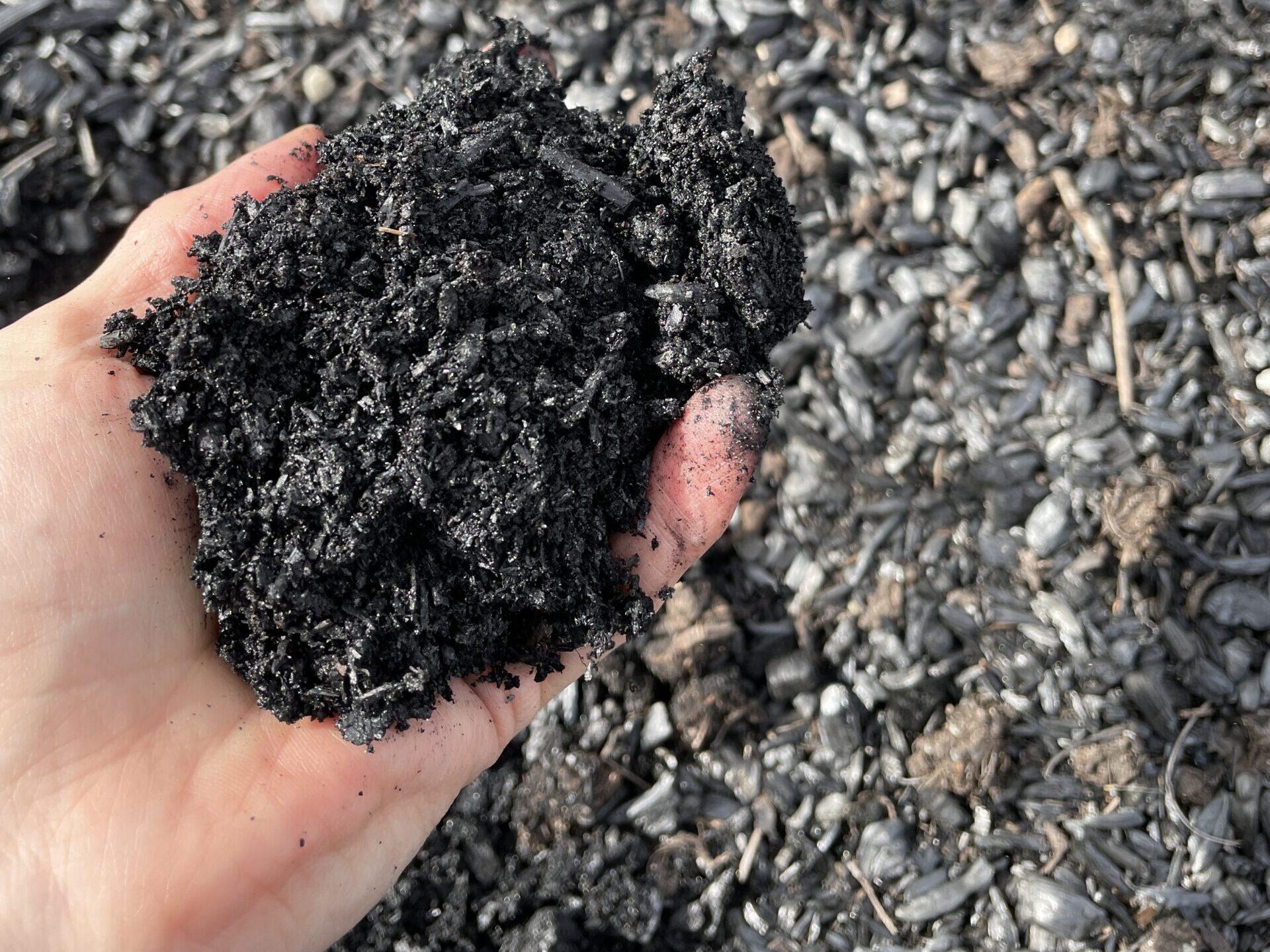
Humic Substances
Humic substances are long, complex chains of acids normally found in deep decomposition, such as peat bogs, and carbon-rich environments. These acids can often improve soil texture, hydrological capacity and infiltration, nutrient levels and availability, and feed soil microbes. Naturally, these acids take a long time to create, but new technology is working to develop artificially created humic acids/substances that can carry out the same benefits (Ampong et al., 2022).
Humic substances are offered in numerous forms: as a soil conditioner, foliar spray, seed treatment, granular form, or for mixing into fertigation irrigation systems. Appropriate application rate and methods vary widely depending on soil type, structure, and project goals (IHSS | International Humic Substances Society, n.d.). It is important to note in specifications to avoid humic products sourced from peat bogs, as peat bogs are a non-renewable resource, and peat bog draining and mining contribute to significant greenhouse gas emissions.
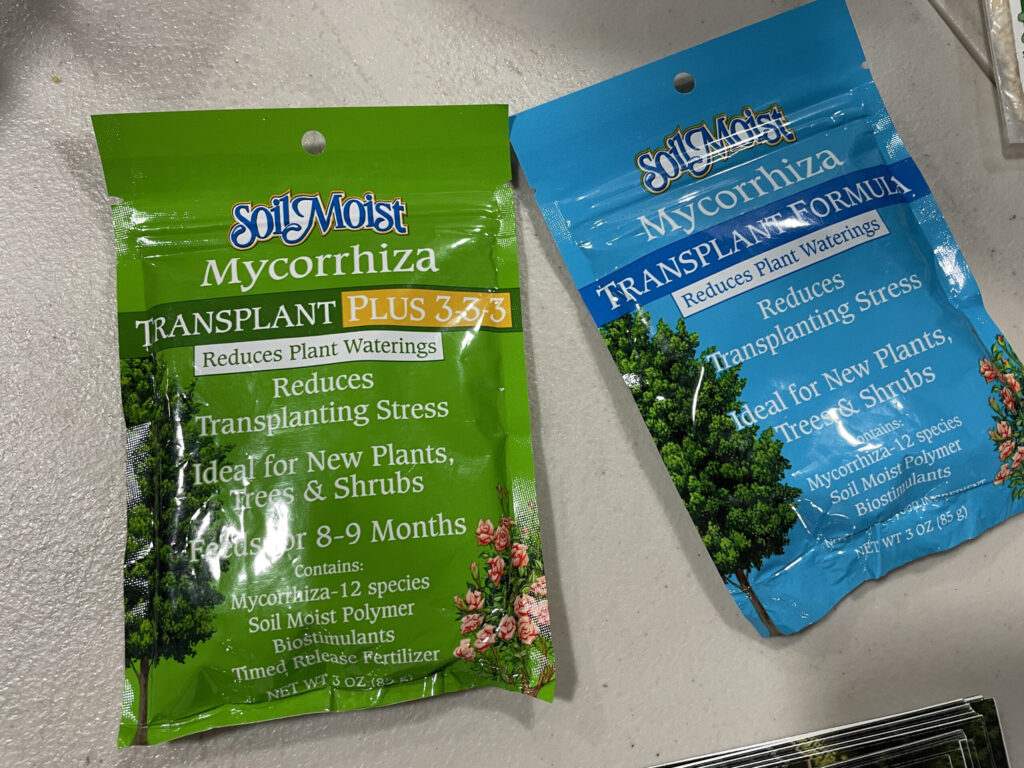
Urine Fertilization
Urine fertilizer is a nitrogen-rich waste product created by collecting and processing urine from human waste streams. It is offered as a clean and less energy-intensive substitute for synthetic products for short-term intervention, such as ammonia/ammonium, nitrate, and urea fertilizers. In order to be used as fertilizer, urine must be processed from an acidic solution to an alkaline one (Rich Earth Institute, 2022).
Like other biosolids, urine fertilization should be screened for heavy metals, pathogens, and pharmaceuticals. Unlike biosolids, there is no industry standard for sourcing and utilizing urine fertilizers.
Agricultural studies conducted by the Rich Earth Institute have shown crop yields similar to fields treated with synthetic nitrogen fertilizers. However, urine fertilizers may cause sodification in arid soils, a buildup of salts that results in degradation that may pollute waterbodies similar to synthetic fertilizers (Rumeau, et al, 2024). Some caution is advised when dealing with sandy soils, pine barrens, and other sensitive ecosystems.
Mycorrhizal Inoculants
Gardeners and restoration advocates have championed mycorrhizal spore amendments in recent years. This is due to the growing understanding of the mutualistic benefits between these fungus species and their host woody plants and trees. The mycorrhizal network is an underground system of fungi that extends the capacity of trees to absorb nutrients and water, in exchange for sugars produced by the trees. This network facilitates the transfer of nutrients, water, and even chemical signals between plants, essentially acting as a communication and resource-sharing system, and is increasingly considered one of the best benefits of cultivating a ‘living soil.’
Arbuscular Mycorrhizal Fungi (AMF) inoculants are a living soil amendment that boosts or seed mycorrhizal functions within the upper layers of the soil profile. These networks of mycelium offer plants a network of nutrient exchange, greater rates of decomposition, increased water capacity, and improved soil texture (Basiru & Hijri, 2022).
AMF inoculants are accessible on the market primarily as an agricultural amendment, but lack sufficient data for use as a larger-scale amendment in the construction industry.
AMF and other mycorrhizal amendment products often introduce species of fungus not from the immediate project region. An alternative inoculation strategy can be to take small quantities of healthy o-horizon soils showing signs of mycorrhizal mycelium (the hyphae or strands of fungus), and blend that soil into the amendment or imported soils being used in the project. Common standards for rates of soil inoculant have not been developed and are an area of active investigation, including developing best practices for site-specific contract propagated inoculum.
Rock Dust
Rock Dust is a byproduct from quarries that mine mineral-rich basalt and granite. It contains trace minerals such as silicon, manganese, cobalt, nickel, zinc, and molybdenum, and mimics the natural weathering and deposition of mineral material into soils. Rock dust can increase carbon sequestration through enhanced rock weathering, causing abiotic carbon dioxide to bind with exposed mineral materials, and also enhance soil structure and microbial activity (Vanacore, 2015)
Rock dust is commercially available with recommended rates based on the method of integration. Tilling and top dressing calls for 5-25 lbs per 100 square ft, while composting calls for 2–29 lbs per cubic yard (Cosier, 2021). Because of the weight and transportation costs of the product, rock dust should be used when able to be locally sourced.
Diatomaceous Earth
Diatomaceous Earth (DE) is a natural soil amendment made from the fossilized remains of diatoms, a type of algae. It can improve soil structure, increase available water holding capacity and sorption, and even act as a natural insecticide due to its structure (primarily when used as a top dressing or mulch amendment). DE’s benefits stem from its high porosity and amorphous silica content. It can be a useful alternative to heavier SOC amendments when working with manufactured lightweight soils, such as greenroof soils.
Amendments to Avoid
Amendments that are no longer recommended for soil specifications:
Biosolids
Biosolids were once commonly specified to recycle organic material from waste facilities. These amendments can be composed of human waste, stormwater runoff, and other nonpoint sources of pollution. Despite regulations to ensure there are no hazardous materials within the product, these amendments often remain full of heavy metals, pathogens, and forever chemicals. Previous sites that have used biosolids as an amendment have reported negative impacts even after passing specifications and screening tests. Soil contamination levels at some farms have been such that the land is no longer usable for agriculture (Popoola et al., 2023).
New startups are revisiting how biosolids can be processed to be safer and more reliable soil amendments. One promising strategy is large scale vermiculture (worm-farming), where biosolids are sprayed on managed woodchip beds with worms, and over time the digested media and worm castings are showing to have significantly reduced hormones and pathogens. However, they do not reduce rates of PFAs (“forever chemicals”), or heavy metals. Biosolids sourced from animal farms and processed through vermiculture may be a viable, very rich soil amendment in the near future.
Synthetic Fertilizers
Synthetic fertilizers are an accessible, quick, and widely used conventional tool to quickly boost macronutrient levels in productive soils. However, synthetic fertilizers invariably pollute the air and nearby water bodies when applied to poorly functioning soils, as they easily wash out, feeding invasive and weedy plant material rather than targeted species, and do not sustain healthy soil functions over time. Excess nitrogen has also contributed to an increased formation of ground-level ozone, acid rain, polluted drinking water, and caused oxygen depletion and “dead zones” in water bodies, which causes serious harm to aquatic wildlife (Ran et al., 2019). Organic fertilizers may offer a slower release rate and longer residency within the soil, but they are more expensive and must still be applied at critical times in order to provide for the actual nutritional needs of plants without leaching nutrients.
While the higher yield and productivity rates associated with these fertilizers can be important for commercial agricultural production, these amendments are often applied irresponsibly in horticultural landscapes where production yield is less important than plant health, and are completely inappropriate in restoration and native plant landscape projects. Even in agricultural production, over-reliance on fertilizers can result in ‘dead soils’, resulting in lower micronutrient availability and available water holding capacity, requiring more fertilizers and irrigation. Over-fertilized crops are more susceptible to pests with fast, weak growth, and encourage more weeds, requiring more insecticides, fungicides, and herbicides, creating a vicious and expensive cycle of chemical treatments.
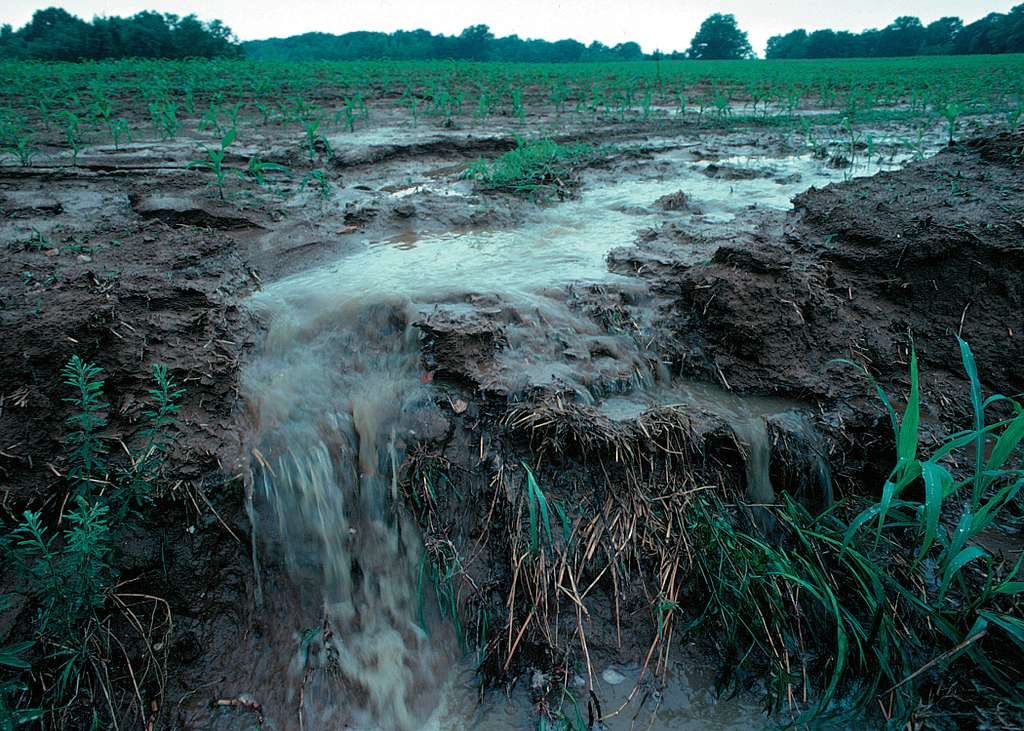
Amendment Development + Gaps to Fill
Much work is needed to identify and standardize local, organic soil amendments so they are available for site projects of all scales. The following opportunities and needs for increased access to soil amendments have been identified by participants in the elaboration of this guide:
Interdisciplinary Collaboration
- Increase the coordination between engineered soil, horticulture, and agricultural industries to identify research and development opportunities for improving soil health in engineered soil mixes
- Offer support to studies of innovative amendments in related fields (ie. agriculture, carbon sequestration). How can their work integrate into soil industries and project work? Could parallel trials be conducted in development projects?
- Look for opportunities to attend and present at cross-disciplinary conferences and gatherings.
- Coordinate with soil scientists pre- and post-construction to follow up on the impacts of development. There are grants available through governmental, academic, and industry sources, such as the MA Office of Energy and Environmental Affairs and the Cultural Landscape Foundation, that could be used for the monitoring and assessment of soil health interventions.
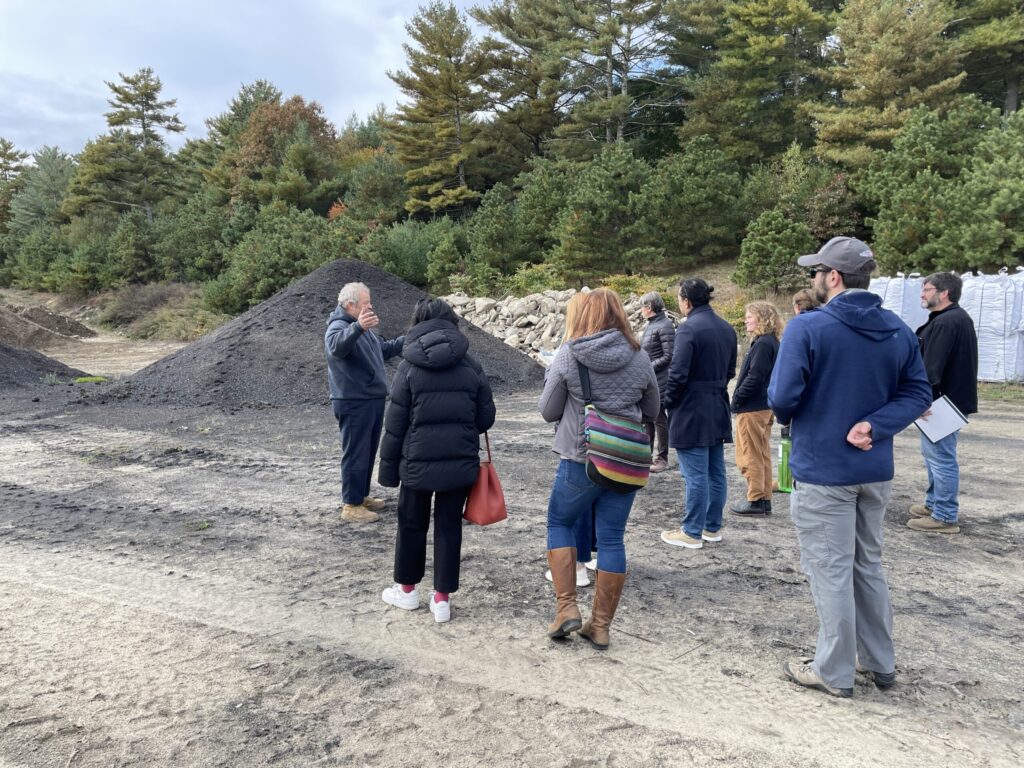
Standardization
- Standardized specifications are needed for many amendments that show potential to improve soil health, including:
- High-quality Biochar
- AMF Inoculants
- Rock Dust
- Urine Fertilizer
Sourcing
- The source of ingredients, fabrication, and transportation all highly influence the embodied carbon of high-quality soil components and amendments. Consider the upstream impacts of different products before specifying a source.
- Prioritize local producers whenever possible. Better resources and directories are needed to locate high-quality products.
- Production facilities should work to lower the embodied carbon of amendments and engineered soils and make that information available to specifiers.
- Identify incentives and support initiatives for the creation of local pyrolysis plants for regional use
- How much organic material can we remove from traditional waste streams? What systems for sorting would need to be implemented in order to ensure reliable and consistent quality components?
- Lower the cost and embodied carbon associated with the transportation of high-quality biochar
- Inorganic materials such as sand are in high demand but are also a non-renewable resource. Are there other alternatives in sourcing?
- A recent initiative shows that glass waste streams could be processed to replace sand in engineered soil mixe
Resources + Tools
Case Studies + Applications
- Longwood Gardens (Kennett Square, PA)
- Circular Soil Initiative
Soil Specifications Resources
- CU-Structural Soil | Cornell University [PDF]
- Planting Soils for Landscape Architectural Projects | ASLA [PDF]
Amendment Resources
- Compost
- Woodchips
- Cover Crops
- Biochar
- Rock Dust
- AMF Inculants
- Humic Substances
- Urine Fertilizer
References
Ampong, K., Thilakaranthna, M. S., & Gorim, L. Y. (2022). Understanding the Role of Humic Acids on Crop Performance and Soil Health. Frontiers in Agronomy,4. https://doi.org/10.3389/fagro.2022.848621
Basiru, S., & Hijri, M. (2022). The Potential Applications of Commercial Arbuscular Mycorrhizal Fungal Inoculants and Their Ecological Consequences. Microorganisms, 10(10), 1897. https://doi.org/10.3390/microorganisms10101897
Chalker-Scott, L. (2007a). Literature on Landscape Use of Wood Chips. Linda Chalker-Scott. https://puyallup.wsu.edu/lcs/reference-wood-chips/
Chalker-Scott, L. (2007b). Wood chip mulch: Landscape boon or bane? Horticultural Myths.
https://wpcdn.web.wsu.edu/wp-puyallup/uploads/sites/403/2015/03/wood-chips.pdf
Cosier. (2021).How Adding Rock Dust to Soil Could Help Get Carbon into the Ground. Yale E360.
https://e360.yale.edu/features/how-adding-rock-dust-to-soil-can-help-get-carbon-into-the-ground
DeJong, J. T., Mortensen, B. M., Martinez, B. C., & Nelson, D. C. (2010). Bio-mediated soil improvement. Ecological Engineering, 36(2), 197–210. https://doi.org/10.1016/j.ecoleng.2008.12.029
Espinosa, N. J., Moore, D. J. P., Rasmussen, C., Fehmi, J. S., & Gallery, R. E. (2020). Woodchip and biochar amendments differentially influence microbial responses, but do not enhance plant recovery in disturbed semiarid soils. Restoration Ecology, 28(S4). https://doi.org/10.1111/rec.13165
Kays, B. L. (2013). Planting Soils for Landscape Architectural Projects.
Major, J. (2018). IBI Biochar Application Guidelines. IBI.
https://biochar-international.org/wp-content/uploads/2018/04/IBI%20Biochar%20Application%20Guidelines_web.pdf
Popoola, L. T., Olawale, T. O., & Salami, L. (2023). A review on the fate and effects of contaminants in biosolids applied on land: Hazards and government regulatory policies. Heliyon, 9(10), e19788. https://doi.org/10.1016/j.heliyon.2023.e19788
Ran, L., Yuan, Y., Cooter, E., Benson, V., Yang, D., Pleim, J., Wang, R., & Williams, J. (2019). An Integrated Agriculture, Atmosphere, and Hydrology Modeling System for Ecosystem Assessments.Journal of Advances in Modeling Earth Systems, 11(12), 4645–4668. https://doi.org/10.1029/2019MS001708
Vanacore, T. (2015). A Rock Dust Primer.
